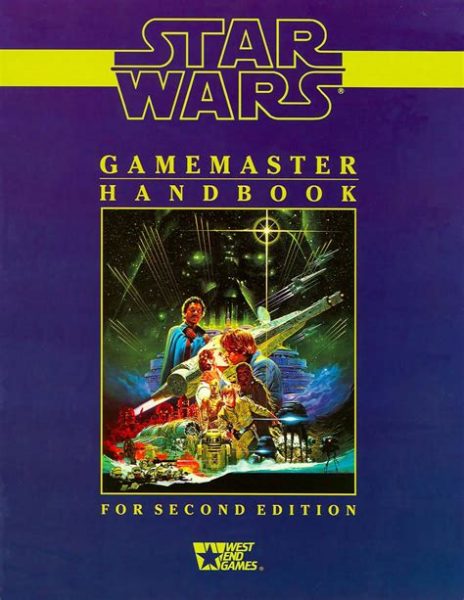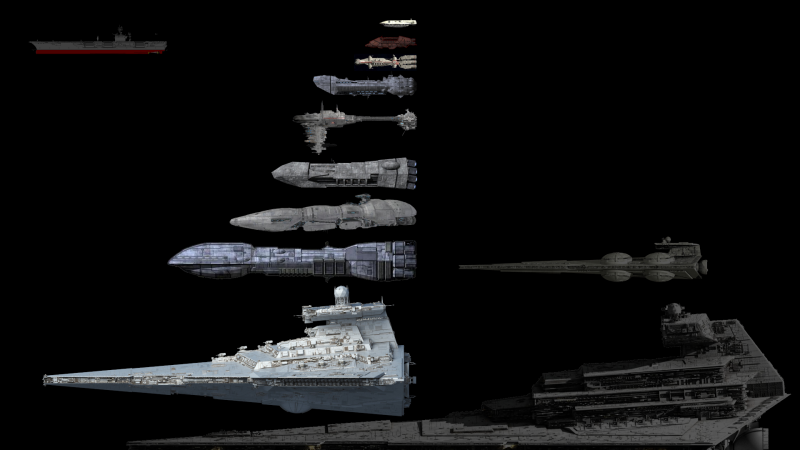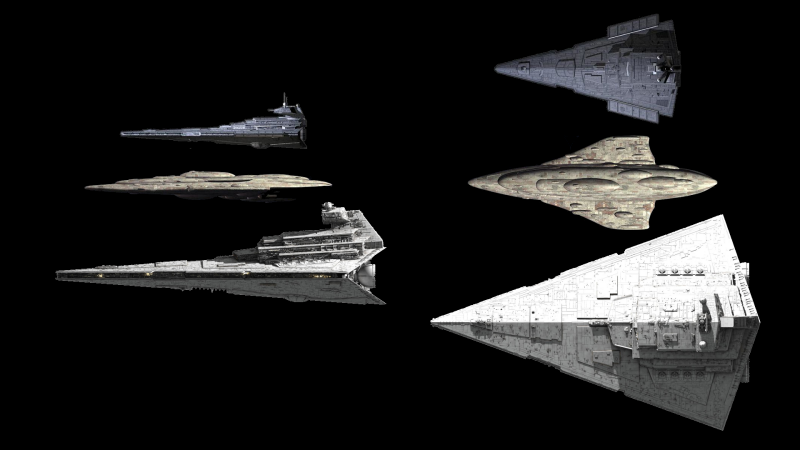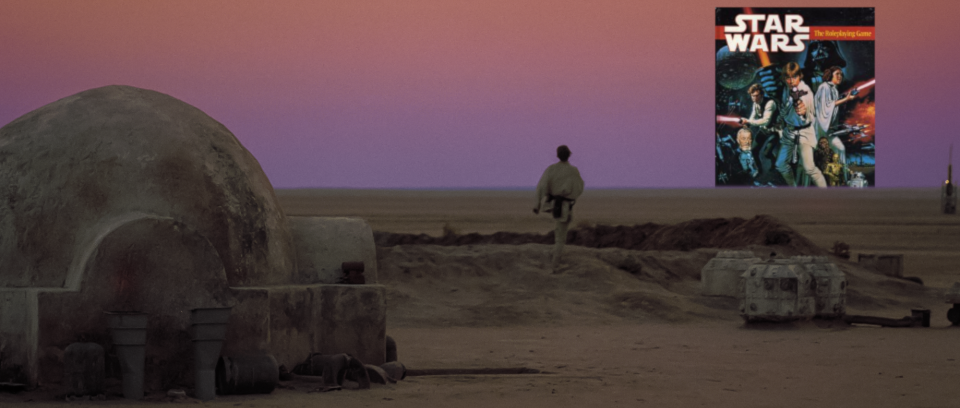I’ve been working on this fantasy setting stuff for many years now and it’s a huge ongoing project that I don’t think will ever reach a point of being called “complete”. Once or twice a year I feel like taking a break from it for a while, and often I’ve turned to tinkering with ideas for a Star Wars campaign. But last week I was playing Kenshi while simultanepusly having Dune on my mind and an urge to put on the Cyberpunk 2077 music again, and I was overcome with the sudden drive to create a majestic Space Opera setting myself. Something that feels like watching an old monumental movie with grand landscape shots in ultra-widescreen cinemascope. Something with the imposing style of 1920s architecture and blend of dusty grime and lavish decadence.
I am still a giant Star Wars fan; as big as you can be before it becomes cringy. But I think the modern iterations of the last 20 years have lost most of the original charm, and I am growing a bit cold on the old Empire and Rebels thing, which never has really been what I thought as compelling game material. And I am also not feeling like Jedi right now. Smugglers is always an option, but for such a campaign you have to create a lot of your own new content, and in that case I am feeling like doing my own original thing from scratch right now. Probably just as a fun exercise, but maybe there might be a campaign coming out of this at some point.
The References
My main reference is of course the greatest movie of all time. The Empire Strikes Back. Specifically I am thinking of Bespin and Lando, but also the bounty hunters. Dagobah also has a stunning feel that I don’t mind refering to for wilderness environments either.
A Princess of Mars. The Granddaddy of them all. This is where most of the other sources on my list get their main influences from. Swordfights, radium guns, desert palaces, space princesses, alien monsters. Barsoom has it all. And I am really quite fond of the aesthetic of Antiquity most artists always associate with it.
Dune. Admittedly mostly the aesthetics of the 80s movie and a bit of the mystic elements, but technologically and socially my setting will probably be very different.
Shadows of the Empire. Star Wars again. I think this one was the last hoorah of classic Star Wars, happening around the same time as the Special Edition relreleases and testing if the market was there for a Star Wars relaunch. I am the first to admit the Shadows of the Empire is not particularly good as a story, and I only played the game and read the book, but not the comics. But this story hits the right notes for me to slighly blend the classic Space Adventure style with Noir elements. Not sure where that came from, but even as a 13 year old or something like that, I always imagined the sections on Corruscant as looking like Noir movies with towering 20s architecture.
The Knights of the Old Republic comic series, which takes place at a similar time and some of the same places as the game but is otherwise a completely separate story. It stands out to me among Star Wars stories in that it’s not about the typical big damn heroes, but rather follows a simewhat obscure B-Team that has its own adventures that mostly happen alongside the big galactic events but occasionally have short, important impacts on the greater picture. What I love about it is that the characters are not the big invincible heroes and their goals seem more personal, even when they are interacting with the great poweful leaders of their time. I find that a much better reference for more pulpy space adventures than the big epic adventures of the main cast, which are also much more practical for playing actual games.
Mass Effect 2. While in many aspects more military hard sci-fi, the series is still well at home among the space operas, and especially so in the second game that has more stories set in the underworld and doesn’t deal with intergalactic politics like the other two games. There are some just gorgeous environments that I happily salavage for descriptions, but in particularly I love the way the series creates its alien species. There is only a dozen or so in total, and with two embarassing exceptions, they all have their own thought out cultures that don’t make any of them a generic villain species. I think the cultures of Mass Effect are one of the geeatest achivements in woldbuilding ever done, and it’s a model I fully embrace for my own species. And of course Lair of the Shadowbroker is an amazing pulpy noir adventure.
Blade Runner has a fantastic environmental design which I am totally going to straight up copy for at least one planet, though the story and technology have nothing to do with what I am planning.
And in the opposite way, Cyberpunk 2077 is a game that has a lot of thematic a d narrative elements I want to make use of, while the visual style is really little overlap with the imagery I want to evoke.
The Concept
The Hyperspace Opera is set in a corner of its own galaxy, completely unrelated to the real world. It’s a pulpy Space Adventure setting with swashbuckling snd gunslinging, a style in which realism doesn’t really apply on the list of priorities. Though as an astronomy nerd who knows a bit or two about chemistry and demographics, my wish is to avoid things that are totally unrealistic when a much more plausible alternative will still make for an equally exciting and interesting setting.
The setting will have a dozen or so space traveling species, and since unlike most classic science-fiction authors I have learned about “demographic transition” back in seventh grade, their populations are each around 10 billion people or so. Which is around the scale at which the human population of Earth will peak out in the middle of the century before stabilizing or possibly even decline. And that is for all the members of the species on both the homeworlds and all their colonies. People aren’t suddenly starting to have more children because they moved to another planet. In total, I think there will be only 300 or so inhabited planets in the entire known space, most of which have only tiny populations of a few thousand people. And only 30 of these will be part of the local region that gets actually developed for play.
Because of the way stars and planets form, no natural resources are anything remotely qualifying as rare. Anything that you might want from a planet is just as abundantly available on dozens of other planets. With only a few hundred inhabited planets, this makes fighting over patches of dirt pointless. You can always find another source if one you found is already claimed, and it’s much easier and cheaper than tryimg to fight someone for their claim. There is no scarciry of natural resources in the setting. The value comes from the work to extract and refine them.
Hypsrspace travel in the setting is pretty easy and quite cheap. With there being an endless abundance of planets of every imaginable shape, it’s very easy for people who don’t like the way things are run around where they live to just pack up their things and leave for one of the many frontier colonies or start their own. With blackjack and hookers!
In a setting with no scarcity of resources, unlimited space, and easy interstellar travel, there is no source for conflicts over territory. Interstellar wars between governments are extremely unusual and their space fleets are really much more like police services or coast guards than military forces. The dominating source of violence is crime, which can come in many different shapes or forms.
The main areas of conflicts are out in the remote frontier colonies. The home systems of the various species are all quite safe, which means there is little adventure to be found. But out on the frontier, there are no meaningful governments or powerful security forces, and things are very different.
While the lure to settle in a colony on the frontier is very enticing to many people, very few of them are imagining a life of scraping in the dirt to grow their own food with muscle power alone. They still want all the comforts and conveniences of the homeworlds and major colony worlds, but being much too small for the industries to produce advanced technologies themselves, they rely on imported machines and goods. And usually the only things to trade for them are whatever natural resources can be dug out from the ground with the simple machines the colonists brought with them on their first arrival.
This is where the great companies of the industrial barons come into the picture. These companies sell about anything that people could want, both in the home systems and most remote colonies, amd they are always in the market for valuable ores of any kind, especially when they can avoid the trouble of digging them up themselves. But as perfect as this arrangement seems, without powerful governments out in the frontier, it’s all a giant setup for massive exploitation. It is open knowledge that the great oligarchs are organized in far reaching cartels to make sure nobody pays the frontier colonists more than a pittance for their ores and agree to not undercut each other with the outrageous prices they demand for the goods they export to the colonies. Everything is set up exactly to squeeze as much money as possible out of the colonies and leave them just enough to keep them from collapsing completely and lose these sources of cheap ore and well paying steady customers. The companies also pull such tricks as not selling any machine parts with the longer service lives that are available in the home systems, or engineer crops that can grow in poor alien soils but don’t produce seeds on their own requiring the purchase of new seeds every season.
The home systems are big and important enough customers so that the governments can enforce regulations and dictate terms, but the frontier colonies have no other suppliers to turn to, and the companies are more than willing to let a few colonies collapse just to send a message to the others what happens if they refuse to do business at the oligarchs’ terms. Some colonies have found ways to escape the clutches of the companies and unite together to pool their resources for better bargaining positions and form industrial cooperatives that build shared factories for advanced technologies that would not be economically viable for a single colony. Any such attempts to unite and collectivize are a thorn in the companies’ sides and a threat to the oligarchs’ power if they are allowed to succeed. And without strong and powerful governments, there is little that js stopping them from using every single dirty trick there is to sabotage them.
Yes, you got that right. Somehow this attempt to create a space opera setting inspired by 1920s architecture and design turned very quickly into a setting about the evils and struggles of industrialization. I was already pretty far into the process when I noticed this, and I think it’s actually really cool. That’s a great theme for pulpy science fiction that I’ve never seen done before, and which I think can be an amazing source for many kinds of conflicts.
A setting like this could easily be very one-dimensional and preachy by making it all about how awful industrialists are and how collectivization is the answer to all problems of the world. Done a thousand times with no real room for any interesting nuances. But being whatever the opposite of a tankie is, I think there are much more interesting stories to interact with in the divisions of the labor movement and the devastating flaws in anti-capitalist ideologies. While much good has come out of the labor movement, communism has not just been a complete failure, but a horrifying disaster of unprecedented scale. Of course you can always have industrial saboteurs and company security looking to break some knees as wonderfully evil antagonists and villainous burocrats, as they should be. But it’s also easy to imagine corrupt colonial leaders who take oligarch money or preferential terms for their own colony in turn for obstructing their neighbours attempts to unite. And of course idealistic small settlements beyond the reach of any governments are te perfect spawning grounds for countless wouldbe tyrants. And space pirates. Always got to have some space pirates.
But with all of that said, what are players supposed to do in an actual game that is supposed to be played? What I have in mind is a classic staple of this kind of space adventurs. The humble independwnt logistics entrepeneur. The space trucker. And or smuggler. The campaign structure I have in mind is about a small cargo crew making occasional deliveries of small shipments to frontier settlements. Out there they quickly become aware of the exploitation going on and the plight of the colonists, as well as the widespread coruption and violence by press gangs and company security. As owners of a small freighter that are no strangers to the concepts of smuggling, this is an environment in which huge profits could be made. But also one in which the players might find it in themselves to offer support to the struggling colonists. But even the most charitable hearts still need to eat, and keeping the lights running on a freighter isn’t cheap. At the end of the day, the campaign is supposed to be fun and exciting pulpy space adventurs. All these ideas for social and economic struggles are really there to provide an environment that creates opportunity for all these things. I think generally the motivations of the actors in this environment are fairly simple to grasp, but they are different from what you usually get in fiction in general and in RPGs in particular.
To close this up, some additional small details:
Artificial gravity exists, because it always does in Space Opera. But there is no explanation given for this marvel that defies any known principles of physics.
Firearms and ship cannons come in the form of railguns. They are not lasers and work just like normal guns. Except more spacey. They also feel right as big chunky things with a somewhat primitive aesthetic rather than sleek and shiny.
Swords and knives are cool and awesome. Knives are actually extremely deadly in a gunfight at short distances,and fights on ships tend to be extremely close. They are also useful when you have to make sure to not shot anything important, and unlike railgun power cells, they are not picked up by most detectors. It makes sense for lots of people to have blades and to know how to use them.
There are no starfighters. They don’t really make sense when you think about how yoh could fight in space, and once I started thinking about how a setting without them could look like, I think you can actually have something really cool with only full sized ships.
No psychic powers. I might change my mind if I find a really good reason, but currently I just don’t see them needed for the stories and situations I have in mind.
No robots? They are of course an old classic element, but currently I don’t really see how theh would meaningfully contribute to the setting with their existence.
No cybernetics or transhuman nonsense. They are all the rage in recent years, but I think they feel out of place with otherwise 1920s retro-aesthetics.
There is no galactic empire. Because the ways I plan space travel and communication to work, governments rarely control more than a single star system, though there are many small comfederations consisting of a home system and a dozen or so autonomous major colony worlds.
Business oligarchs are the space aristocracy. They don’t usually use noble titles (sorry Star Wars), but they are an aristocratic merchant caste in all ways that matter.
No evil species. As I mentioned earlier on, I really like having aliens as actual people instead of bland stereotypes as a convenience for lazy character writing.
Lots of exotic planetary environments. RPGs are not limited by effects budgets, so we can have all kinds of different suns and moons and other fun things to make planets distinguishable and evokative.
 Local Communication
Local Communication




